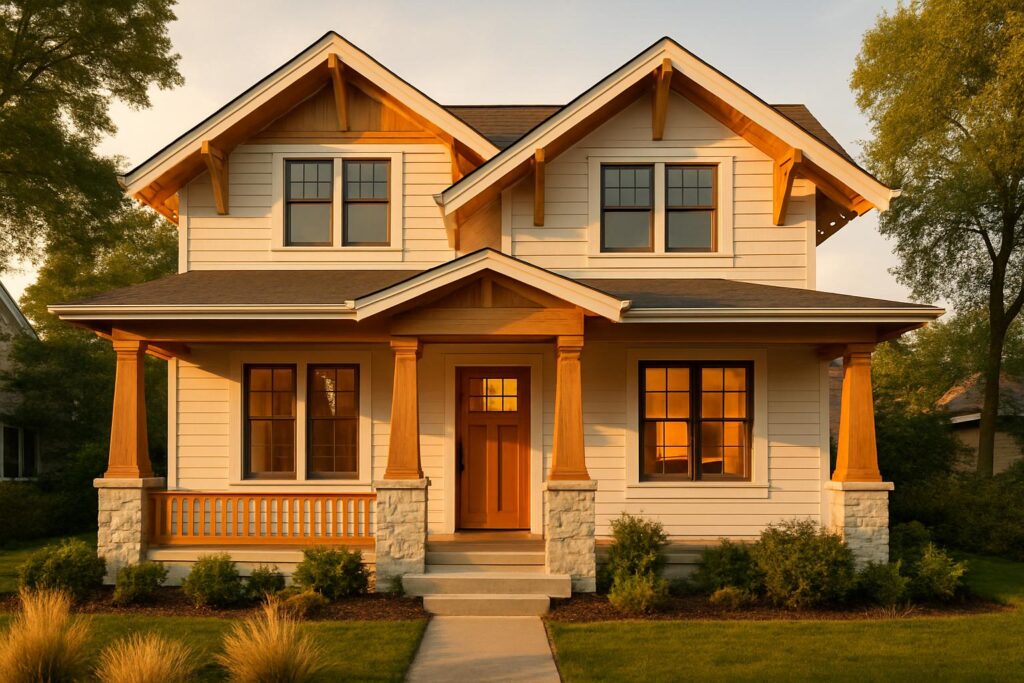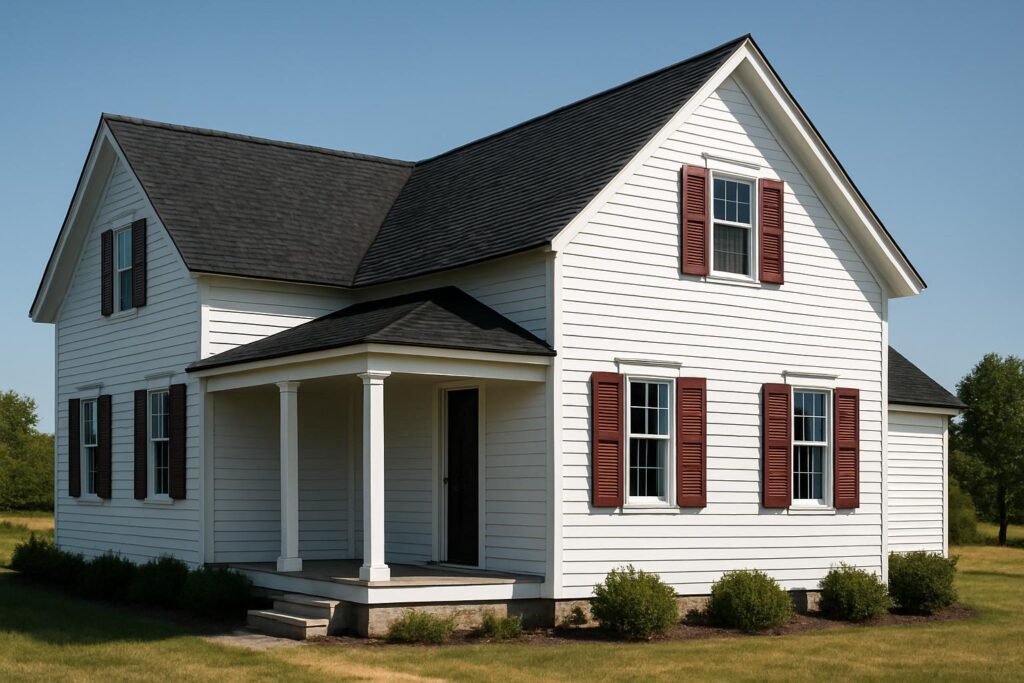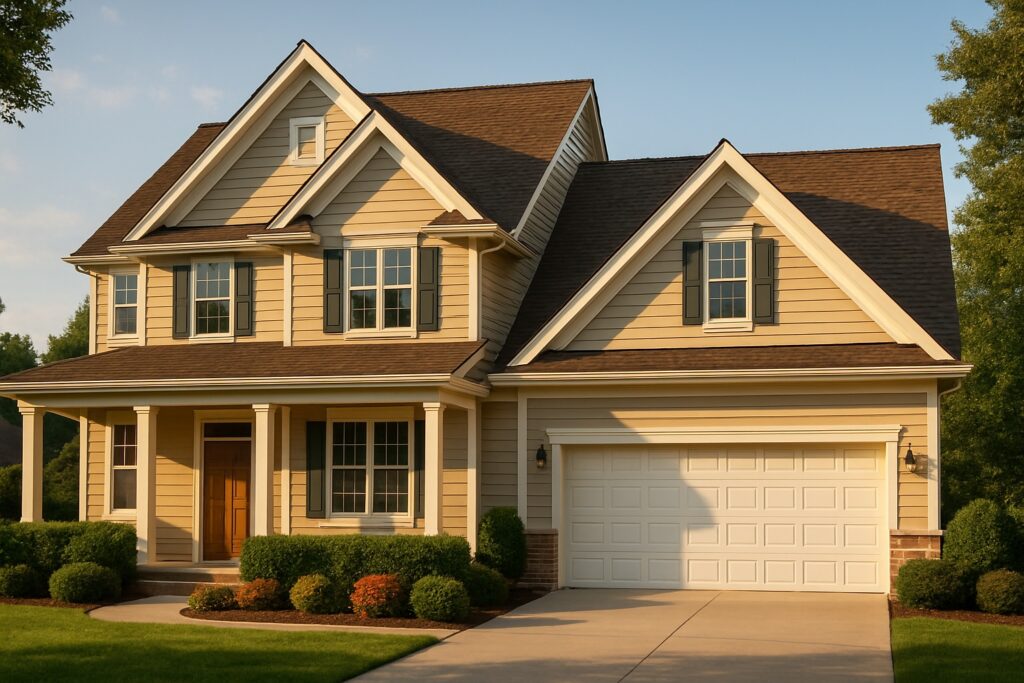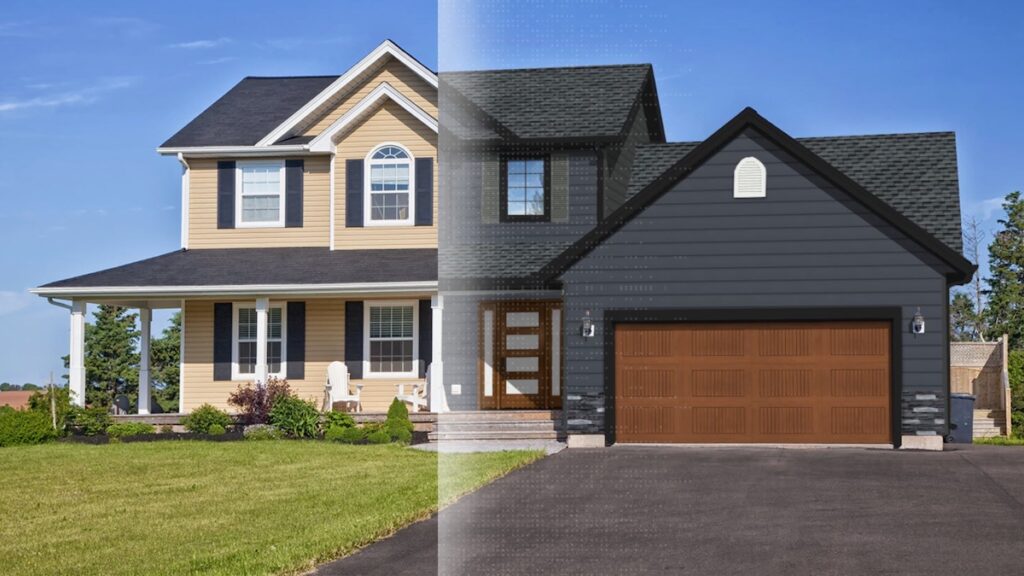TLDR
Steel roofs are one of the most reliable and long-lasting roofing investments homeowners can make.
Key takeaways:
Steel roofs last 40–70 years with proper maintenance.
A metal roof offers higher durability, energy efficiency, and ROI compared to asphalt shingle.
Choosing the right metal roof material, panel style, and gauge impacts performance and lifespan.
Tin roof, copper roof, zinc roof, and aluminum roof all offer unique benefits for different climates.
Professional installation and correct fastener use prevent the most common problems.
See your home with a steel roof instantly using the Renoworks Visualizer — compare materials, colors, and roof options before installation.
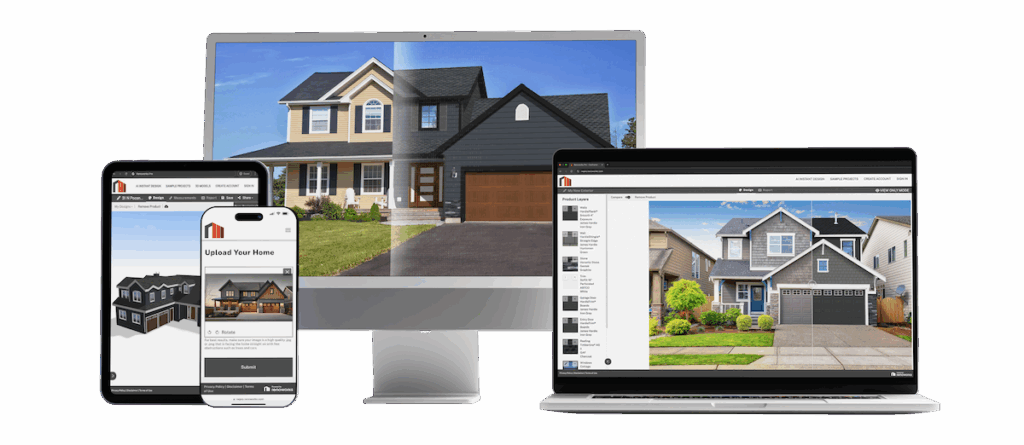
Introduction
If you’ve been researching metal roofing, chances are you’ve already come across glowing reviews about its 40–70 year lifespan, energy efficiency, and modern look. But before investing thousands into your roof, it’s natural to wonder: what’s the biggest problem with metal roofing?
The truth is, metal roofs themselves aren’t flawed — the real issue lies in improper installation, especially with fasteners. A poorly fastened roof can lead to leaks, rust, and costly repairs, while the same roof installed correctly can outlast almost any other roof material on the market.
This guide goes beyond surface-level pros and cons. You’ll learn:
What contractors identify as the most common issues with metal roof systems.
How each type of metal roof material — from steel to copper to tin roof — performs in real conditions.
The role of fasteners, coatings, and maintenance in preventing long-term problems.
Why, despite the potential pitfalls, a steel roof remains one of the most durable and cost-effective roof options available today.
By the end, you’ll not only know the biggest problem with metal roofing but also how to avoid it — ensuring your investment pays off for decades.
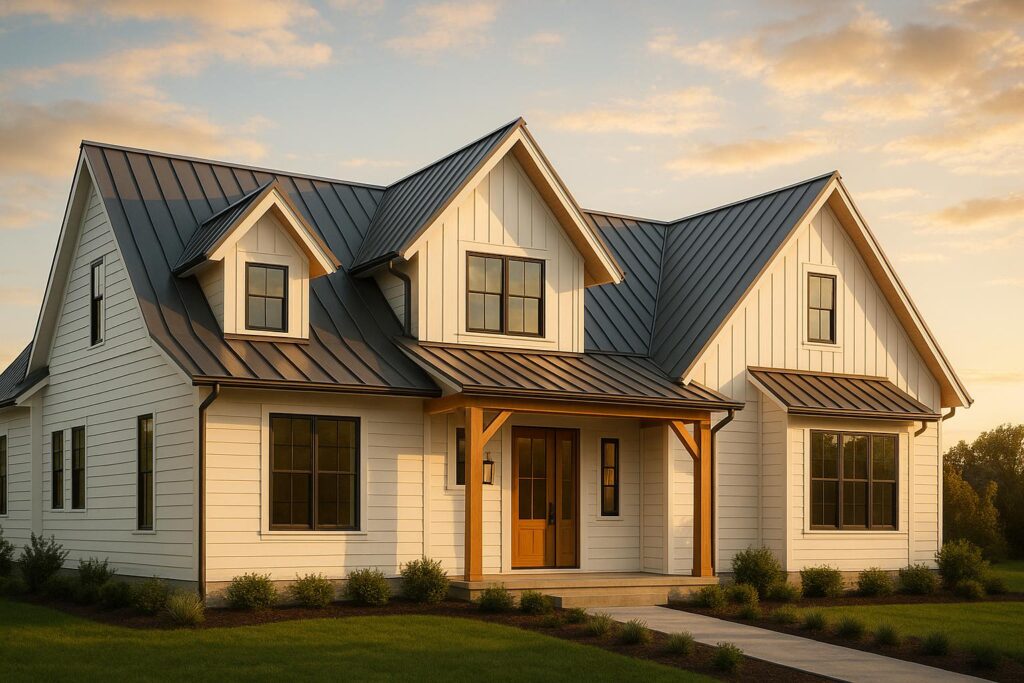
Why Homeowners Choose Steel Roofs
When selecting a roof material, a homeowner must weigh lifespan, aesthetics, and cost. An asphalt shingle roof may seem attractive upfront due to lower installation costs, but a steel roof delivers longer service life, better weather resistance, and improved resale value.
Contractors emphasize that a steel roof typically lasts 2–3 times longer than a shingle roof. Even a 29-gauge corrugate metal roof will usually outlast standard shingles, while heavier-gauge panels or stone coat steel panels extend durability even further.
Industry data suggests a steel roof can recoup over 60% of its cost at resale. Buyers recognize the appeal of durable roofing materials, especially in areas exposed to hail, heavy rain, or wind. In addition, zinc coatings and stone coat finishes provide extra corrosion resistance, which is why many roofing contractors recommend upgrading to premium metal roof panels for long-term ROI.

Comparing Types of Metal Roofs
Every type of metal roof offers unique benefits. Choosing the right option depends on budget, style, and climate:
Steel Roof: Affordable, widely available, and adaptable with finishes like galvanized steel or stone coat steel.
Aluminum Roof: Lightweight and corrosion resistant, excellent in coastal environments.
Copper Roof: Premium, develops a patina over time, lasts up to a century.
Zinc Roof: Durable, self-healing surface that hides scratches.
Tin Roof: Traditional option, often chosen for rustic homes or heritage projects.
Metal Tile and Metal Shingle: Provide the look of traditional clay tile or asphalt shingle but with the strength of metal.
Homeowners should also consider roof material gauges. A 26-gauge roof panel provides more dent resistance than a thinner 29-gauge version.

Understanding Metal Roof Panels and Systems
The term “metal roof” doesn’t just refer to one style. Panels and systems vary widely:
Corrugate Metal Roof: Recognizable wavy pattern, cost-effective, often used in agricultural and residential applications.
Stand Seam Metal Roof: Sleek vertical lines with concealed fasteners, among the most durable and weather-resistant systems.
Stone Coat Steel: Combines a steel roof panel with stone granules for aesthetic variety.
Metal Roof Panel Systems: Include overlapping panels or interlocking designs to minimize leaks.
The choice of fastener plays a critical role in performance. Improper fastener installation remains the biggest risk for leaks in any metal roof system. That’s why contractors insist on concealed fasteners in premium stand seam roof designs.
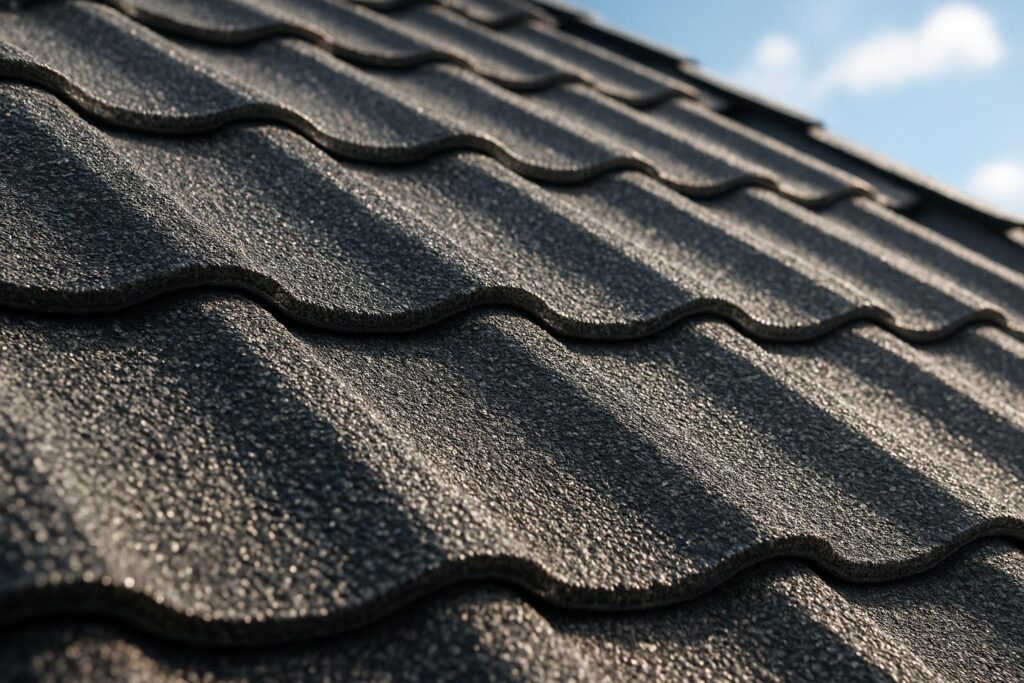
Cost Considerations: Is a Steel Roof Expensive?
Homeowners often ask whether a steel roof is expensive compared to asphalt shingle. The answer is yes, upfront — but long-term economics favor metal:
Initial Installation: More costly than asphalt shingle roof or clay tile.
Durability: Steel, zinc, and aluminum last far longer, meaning fewer replacement cycles.
Energy Efficiency: Reflective coatings reduce cooling costs.
Resale Value: A steel roof enhances buyer confidence in a home.
While a corrugate roof or tin roof can provide budget-friendly entry points, higher-end roof options like copper and zinc roofs are an investment in longevity. A homeowner choosing galvanized steel or stone coat steel may find the balance between cost and performance is ideal.
Performance and Durability in Real Conditions
Durability is the top reason homeowners switch from shingle roof products to a steel roof.
Wind Resistance: A properly fastened metal roof system withstands gusts better than asphalt shingle.
Hail Protection: Thick metal roof panels resist dent damage, especially in gauges stronger than 29.
Corrosion Resistance: Zinc, galvanized steel, and protective coats prevent rust.
Moisture Control: Correct installation and underlayment stop leaks during heavy rain.
Lightweight Advantage: An aluminum roof or corrugate roof often weighs less than clay tile, reducing stress on the home’s structure.
In practical terms, a homeowner can expect less maintenance and fewer repairs. Contractors recommend annual inspections to monitor fasteners, coat integrity, and panel alignment.
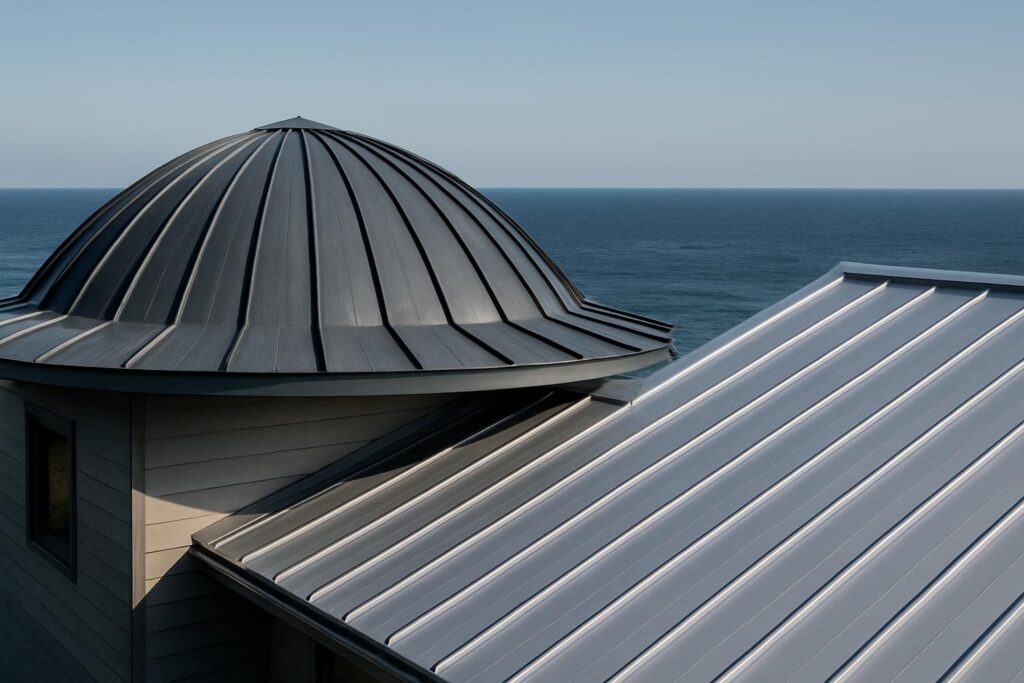
Room-by-Room Benefits of Metal Roof Materials
Roof performance affects the entire home:
Living Areas: Reflective coatings lower cooling costs, keeping family rooms comfortable.
Bedrooms: With correct insulation, a metal roof reduces rain noise.
Bathrooms and Basements: While less exposed, they benefit indirectly from consistent energy savings.
The right metal roof material balances durability, cost, and aesthetics. Contractors often guide homeowners through each type of metal roof type — whether it’s tin roof, zinc roof, or aluminum roof — to match lifestyle and climate needs.
Maintenance: Extending Roof Life
Maintenance is essential for maximizing lifespan.
Fasteners: Should be checked periodically to prevent leaks.
Coatings: Protective coat systems, like stone coat steel or zinc finishes, need inspection.
Rust Prevention: Even galvanized steel requires occasional attention to edges and seams.
Debris Removal: Prevents water pooling that accelerates corrosion.
With proper care, a steel roof or tin roof can last decades beyond expectations, far outlasting an asphalt shingle roof.
Conclusion
A steel roof is one of the most durable and cost-effective roof materials on the market. From corrugate metal roof systems to premium copper roof and zinc roof options, metal roofing provides unmatched longevity, corrosion resistance, and ROI.
Instead of replacing an asphalt shingle roof every 20 years, a homeowner with a properly maintained tin roof or stone coat steel roof can expect decades of reliable service. The long-term advantages far outweigh the upfront cost.
See your home with a steel roof design today using the Renoworks Visualizer — test every roof option, from aluminum roof to copper roof, and preview styles before installation.
FAQ
What Is the Biggest Problem with Metal Roofs?
Improper fastener installation is the most common problem. This can cause leaks and corrosion if left unchecked.
Does a Metal Roof Devalue a House?
No. A metal roof increases resale value because of its durability, energy efficiency, and long-term performance.
Do Metal Roofs Leak More Than Shingles?
Not when installed correctly. Stand seam metal roofs outperform asphalt shingle in resisting leaks.
Is It Cheaper to Get a Metal Roof or Shingles?
Asphalt shingle is cheaper upfront, but metal roof materials last much longer, offering higher ROI.
What Type of Metal Roof Lasts the Longest?
Copper roof and zinc roof often last 80–100 years. Steel with stone coat or galvanized coatings averages 40–70 years.
What Is a Disadvantage of a Steel Roof?
The main disadvantage is cost. A steel roof is more expensive upfront than asphalt shingle, but long-term durability balances the investment.
How Long Will a 29 Gauge Metal Roof Last?
Usually 20–30 years, but thicker gauges like 26 provide greater dent resistance and longer lifespan.
Which Is Stronger 26 or 29 Gauge Metal Roofing?
26 gauge roof panels are thicker, stronger, and more resistant to hail and wind than 29 gauge.
Is Steel Roof Expensive?
Yes, initially. However, reduced maintenance and replacement costs make it economical over decades.
Can You Install a Tin Roof Yourself?
It’s possible, but professional installation ensures panels, fasteners, and coatings are applied correctly.
What’s Roofing Tin Called?
Roofing tin generally refers to tin roof panels. In modern use, most “tin” systems are actually steel or aluminum.


